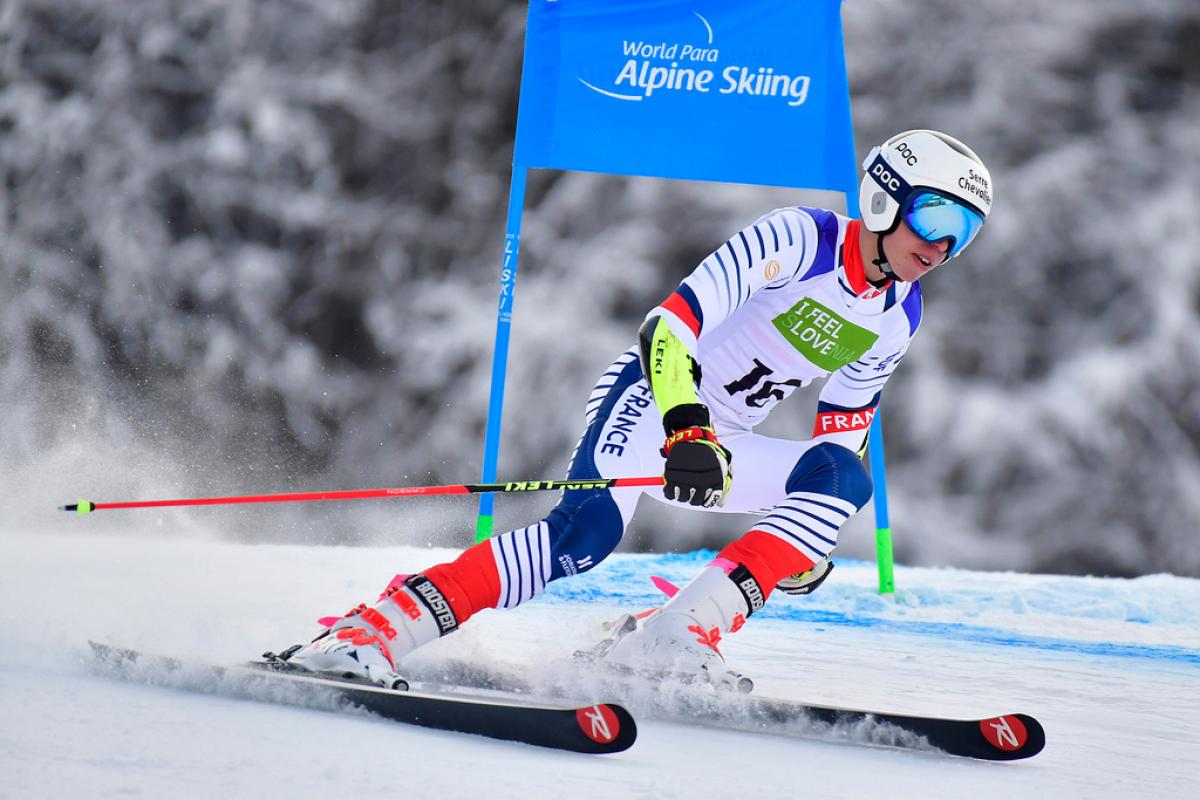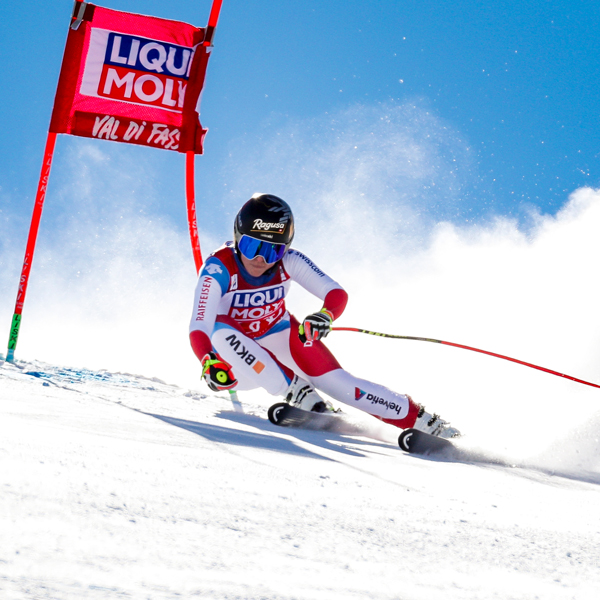

Alpine skiing, or downhill skiing, is the pastime of sliding down snow-covered slopes on skis with fixed-heel bindings, unlike other types of skiing (cross-country, Telemark, or ski jumping), which use skis with free-heel bindings.Whether for recreation or for sport, it is typically practiced at ski resorts, which provide such services as ski lifts, artificial snow making, snow grooming.
Fischer RC4 World Cup SC MT Race Ski + RC4 Z12 Race Ski Binding 2021. Whether you're just getting started out with your first pair of race skis or need the latest and greatest for World Cup competition, we've got it. From SL to GS and multievent skis, Start Haus is the one stop ski shop for all your racing needs.

- Downhill - race course. It is considered to be one of the most challenging downhill slopes in the world; the Streif. The supreme discipline of alpine ski is held on Mount Hahnenkamm, hot on the heels of the Lauberhorn Races in Wengen, Switzerland – another of the great alpine ski classics. The race first took place on today’s Streif course.
- Unissued / Unused material. Downhill ski races. Sestrieres, Italy. Various shots snow-covered mountain slope. Various shots contestants starting race.
Downhill Ski Race G Force


Gliding is the art of maintaining the flattest ski in order to achieve the lowest possible friction. The forces associated with gliding are fairly straightforward: gravity, friction, and air resistance. Air resistance has several inputs that add to the total resistive force. Friction is caused by the lack of a perfectly smooth surface between the skis and snow on a microscopic level. Think of it as the Rocky Mountain range trying to slide over the Himalayas. On a microscopic level this is what friction is.Two factors contribute to the resistive frictional force; a normal force and the friction coefficient. The normal force is the force holding the person up keeping them from falling towards the center of the earth. On level ground the normal force acts straight up against the acceleration of gravity. On a slope, the normal force is equal to the force of gravity proportional to the cosine of the angle of the slope to horizontal. This portion of gravity attempts to accelerate the person toward the center of the earth, the normal force resists this acceleration. The remaining component of gravity accelerates the body down the hill parallel to the slope, a linear acceleration.It is the coefficient of friction that speed skiers and racers try to reduce to a minimum. The normal force is a constant since it is related to their body weight, which does not change during the course of the race. The coefficient of friction is already reduced from everyday levels because of the snow, but it is the goal of racers to reduce this to an absolute minimum to maximize speed.The coefficient of friction is a unit less ratio of the force of friction to the normal force. The real value for the coefficient is often determined experimentally....... middle of paper ......and the force normal to the shear plane. These two forces again result in the same resultant force but are rotated into the shear plane. The angle of rotation into the shear plane is phi in above second diagram. Phi is the edge angle minus the angle in the triangle of the normal force(N) and the friction force(F) on the ski divided by 2. This can be seen in the first diagram. The centripetal force can be found using the above equations in the second diagram:Fc=Fs*cos(phi)+Fn*sin(phi)Fn=Fs/tan(O-b-F)The Fc is the failing point at which the racer begins to slide the ski and lose speed. When a racer does balance the speed, radius, and other factors to maximize the centripetal force and acceleration, up to 2.5 Gs of acceleration can be achieved. Downhill ski racing is a ballet and balancing act of the laws of physics to be the fastest person down the hill.
Winding Downhill Ski Race
Skiing is a sport enjoyed by millions of people around the world. The adrenaline rush that skiers get from flying down the slopes is unmatched, but all too often the cause for this rush is overlooked. Physics plays a crucial role in skiing and without it, there would definitely be no skiing. The concept of skiing is simple. You attach a ski to each foot, go to the top of a hill or incline, and slide down, turning side to side. From this basic concept of sliding down an inclined plane, a worldwide sport has evolved. In this paper, I hope you gain a useful knowledge of the vitally important role that physics plays in the sport of downhill skiing.
m = mass of skier
g = gravitational force
a = acceleration
mu = kinetic friction coefficient
· Inertial Forces = (m)(a)
· Frictional Force = (mu)(m)(g)(cos theta)
· Graviational Force = (m)(g)(sin theta)
Gravity is the force that holds the skier to the ground and is also what pulls the skier down the hill. While gravity is acting straight down on the skier, a normal force is exerted on the skier that opposes gravity. As the skier skis down the hill, he or she will encounter an acceleration. This acceleration is due to gravity caused by a change in the skiers velocity. The mass of a skier is different for every person and is easily calculated by multiplying a skiers weight in kilograms by the gravitational force exerted by the earth. These forces and more are explained throughout the rest of this paper.
Gravity is a force that everybody is familiar with and is one of the simplest to understand. We all know that if you were to throw a ball in the air it would fall right back down. This force called gravity exerts a constant acceleration of 9.81 m/sec2 towards the center of the earth. Gravity is what pulls you down the hill. While gravity is being exerted downward, a normal force is being exerted on the skier opposing gravity. This normal force acts perpendicular to the earth's surface, and in this case the mountain on which the skier is skiing. Lets say for instance the skier was on a flat surface, both gravity and the normal force would be acting on the skier but in opposite directions, thereby canceling each other out and resulting in no movement. However when a skier is on the mountain, the combination of gravity and the perpendicular normal force result in the skier being pulled down the mountain at the same angle as the mountain’s slope.
m = mass of skier
g = gravitational force
a = acceleration
mu = kinetic friction coefficient
· Inertial Forces = (m)(a)
· Frictional Force = (mu)(m)(g)(cos theta)
· Graviational Force = (m)(g)(sin theta)
Gravity is the force that holds the skier to the ground and is also what pulls the skier down the hill. While gravity is acting straight down on the skier, a normal force is exerted on the skier that opposes gravity. As the skier skis down the hill, he or she will encounter an acceleration. This acceleration is due to gravity caused by a change in the skiers velocity. The mass of a skier is different for every person and is easily calculated by multiplying a skiers weight in kilograms by the gravitational force exerted by the earth. These forces and more are explained throughout the rest of this paper.
Gravity is a force that everybody is familiar with and is one of the simplest to understand. We all know that if you were to throw a ball in the air it would fall right back down. This force called gravity exerts a constant acceleration of 9.81 m/sec2 towards the center of the earth. Gravity is what pulls you down the hill. While gravity is being exerted downward, a normal force is being exerted on the skier opposing gravity. This normal force acts perpendicular to the earth's surface, and in this case the mountain on which the skier is skiing. Lets say for instance the skier was on a flat surface, both gravity and the normal force would be acting on the skier but in opposite directions, thereby canceling each other out and resulting in no movement. However when a skier is on the mountain, the combination of gravity and the perpendicular normal force result in the skier being pulled down the mountain at the same angle as the mountain’s slope.